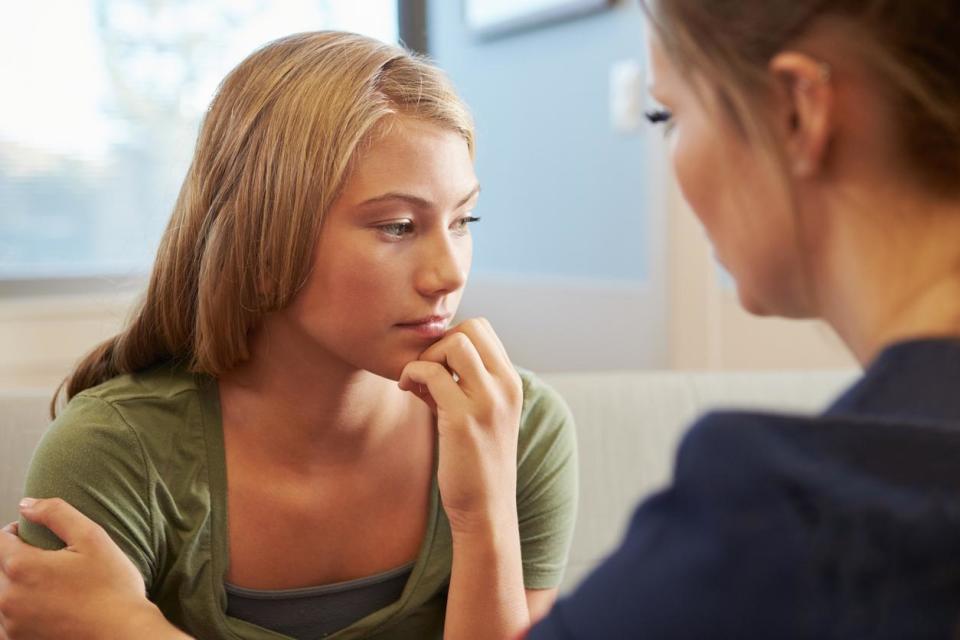Self-harm among teenage girls up 68% in three years, shows research

Self-harm among teenage girls has risen by 68 per cent in three years, research has revealed.
The study by researchers at the University of Manchester found that self-harm among young people aged 10-19 was three times more common among girls than boys, with those who self-harmed at much greater risk of suicide than those who did not.
Based on data from 674 GP practices across the UK, the findings reveal that annually between 2001 and 2014, on average 37.4 girls per 10,000 and just over 12 boys per 10,000 reported their first episode of self-harm.
While the rate of self-harm remained fairly constant between 2001 and 2014 among boys aged 10 to 19, as well as among girls aged 10 to 12 and 17 and older, it increased by 68 per cent among girls aged 13-16 between 2011 and 2014.
The study, published in the British Medical Journal (BMJ) also found self-harming to be more common among children and teenagers living in deprived areas, who were less likely to be referred to mental health services within a year of their first incident than those in more affluent areas.
Referrals to specialist mental health services within 12 months of self-harming were 23 per cent less likely for young patients registered in practices in the most deprived areas, even though the rates of self-harm were higher there.
The findings showed that youngsters who self-harmed were about nine times more likely to die an unnatural death than those who did not, 17 times more likely to die from suicide and 34 times more likely to die from acute alcohol or drug poisoning.
Professor Nav Kapur, co-author of the study and professor of psychiatry and population health at the University of Manchester, said that while the study may have missed some episodes of self-harm, the sharp rise among girls aged 13-16 was "striking" and urged that it must prompt earlier intervention in primary care to reduce suicide risk.
He continued: "We know talking treatments can help. There is also a need for more integrated care involving families, schools and health and social care providers and the voluntary sector to enhance safety among these distressed young people and to help secure their future mental health and wellbeing."
Professor Kapur added that the rapid increase could in part reflect better awareness or recording of self-harm in primary care, but that it could also be a result of increasing stress and higher levels of psychological problems in young people.
"There is some evidence indicating that common mental health disorders are becoming more common within this age group. The internet and social media can be really helpful in preventing self-harm but could have negative effects too and this is a focus of significant research and activity," he said.
“It’s very important that young people, parents and carers aren’t unduly alarmed by these findings. We know that for many young people things get better and they no longer hurt themselves as adults. But of course we must take self-harm seriously; it’s important to understand its underlying causes.”
The findings come after it emerged that the NSPCC counselled a record number of children about suicide last year, carrying out an average of 62 counselling sessions a day as more young people across the UK reached crisis point and contacted the service for help.
Volunteers at Childline held 2,061 counselling sessions — a nine per cent increase — with actively suicidal young people who had taken initial steps to take their own lives, such as writing a note, giving away meaningful items, or planning their death.
Responding to the latest findings, an NSPCC spokesman said: “These heartbreaking figures are sadly unsurprising because Childline hears from so many young people who hurt themselves. Last year we held more than 15,000 counselling sessions about self harm, and many young people who talked about suicidal feelings also mentioned self-harm.
"Self harm can often be an expression of a deeper problem which is why early intervention services to support these children are vital. Without this, the consequences really can be a matter of life or death.”
Health minister Jackie Doyle-Price said: “It’s worrying to see the number of young people who self-harm and experience suicidal feelings is increasing - I want every young person to be able to seek and access help when they need it.
“That’s why we have made the national suicide prevention strategy address self-harm as an issue in its own right for the first time, backed by a record £1.4bn investment in young people’s mental health care, and we’re working with schools to provide mental health first aid training, so that all children can get support they need.”

 Yahoo News
Yahoo News 